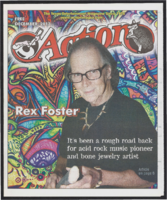Retta Murphy oral history interview
Description
In the 1978 interview, conducted by History faculty members Merry FitzPatrick and Ronald C. Brown, Dr. Henrietta "Retta" Murphy talks about her experiences at Southwest Texas State, from her arrival in 1919 when the school was still a Normal College, through her retirement in 1956. She relates stories about President “Prexy” Evans, President Flowers, Lyndon Johnson, and mentions SWT professors H.M. Greene, James Taylor, Emmie Craddock, Alfred Nolle, and Betty Kissler among others. She also talks about her beliefs about education and teaching and offers examples from her years of teaching college students. The interviewers and Dr. Murphy had a collegial relationship and they laughed through much of the interview.



